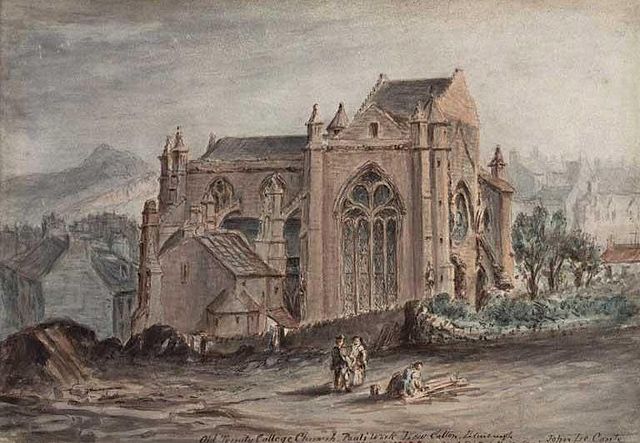
The church from the north in the early 1840s
Image: Wikipedia
building had been left uncompleted in the fifteenth century. It was founded in 1460 by Queen Mary of Guelders, the widow of King James II, as a memorial to her husband who had been killed at the siege of Roxburgh that year. Although work on the project clearly continued after her death in 1463, when she was buried in the church, the nave of the church was never built, nor was the central tower completed. Wikipedia has a very detailed account of the foundation and building, and of its subsequent fate, with excellent illustrations and plans. This can all be seen at Trinity College Kirk
The Wikipedia life of the Queen can be seen at Mary of Guelders
However there is in addition an excellent online biography and appraisal of Queen Mary from the weavingthetapestry project at Mary of Guelders, Queen of Scots (c.1433-1460)
There is a somewhat shorter account that is also well balanced from Medievalists. net at Mary of Guelders, Queen of Scotland
Her activities as a builder are described in a video which can be seen at Mary of Guelders and the Architecture of Queenship in fifteenth-century Scotland
One unique and beautiful treasure does survive from the medieval church - the two sided wings of the altar piece which depict on the outside the Holy Trinity and the first Provost, Edward Bonkhill, accompanied by an Angel organist and, on the inside, Queen Mary’s son King James III with St Andrew and his Queen, Margaret of Denmark, with St George.
Hugo van der Goes circa 1478-9
Royal Collection on permanent loan to the National Gallery of Scotland in Edinburgh
Image: Wikipedia


A riveting read. Thank You, John.
ReplyDelete